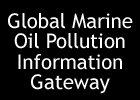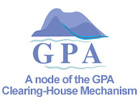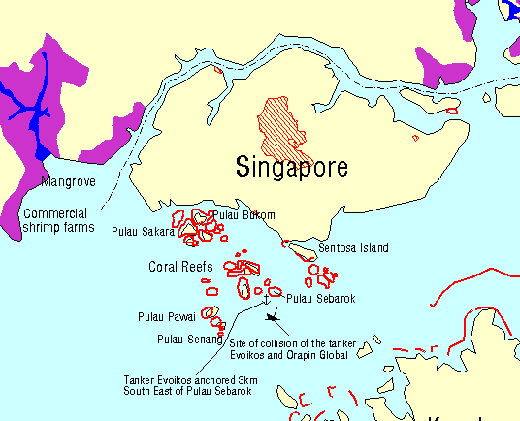|
Regional
reports on the state of the marine and coastal environment
 ESCAP:
State
of the Environment in Asia and the Pacific 2000.
ESCAP:
State
of the Environment in Asia and the Pacific 2000.
 UNEP: Asia
Pacific Environment Outlook 2. Published periodically
to present the state of environment and its trend in
the region. The report aims to critically review the
existing status of the environment, the driving forces
for changes, and the existing set of policy initiatives
undertaken to confront environmental challenges.
UNEP: Asia
Pacific Environment Outlook 2. Published periodically
to present the state of environment and its trend in
the region. The report aims to critically review the
existing status of the environment, the driving forces
for changes, and the existing set of policy initiatives
undertaken to confront environmental challenges.

 UNEP GPA: Overview
on Land-based Sources and Activities Affecting the Marine
Environment in the East Asian Seas.
UNEP GPA: Overview
on Land-based Sources and Activities Affecting the Marine
Environment in the East Asian Seas.
 COBSEA/EASRCU: Identification
of Regional "Hot-spots" on land-based pollution,
their characteristics and impacts.
The project is one of the identified activities in the
Regional Programme of Action for the Protection of Marine
Environment from the Effect of Land-based Pollution.
The implementation of the project will contribute to
the general objectives of the Regional Programme of
Action, and address priority problems in the region.
COBSEA/EASRCU: Identification
of Regional "Hot-spots" on land-based pollution,
their characteristics and impacts.
The project is one of the identified activities in the
Regional Programme of Action for the Protection of Marine
Environment from the Effect of Land-based Pollution.
The implementation of the project will contribute to
the general objectives of the Regional Programme of
Action, and address priority problems in the region.
 UNEP GPA: East
Asian Seas (brief description of environmental state,
priority issues).
UNEP GPA: East
Asian Seas (brief description of environmental state,
priority issues).
 UNEP:
Global
Environment Outlook 3 (GEO3). Coastal and marine
areas.
UNEP:
Global
Environment Outlook 3 (GEO3). Coastal and marine
areas.
 University
of Rhode Island: Large Marine Ecosystems (LME): Gulf
of Thailand, South
China Sea, Sulu-Celebes
Sea, Indonesian
Sea, North
Australian Shelf, and part of the Bay
of Bengal.
University
of Rhode Island: Large Marine Ecosystems (LME): Gulf
of Thailand, South
China Sea, Sulu-Celebes
Sea, Indonesian
Sea, North
Australian Shelf, and part of the Bay
of Bengal.
International
actors and agreements in the region
 See
Global action and Global
actors.
See
Global action and Global
actors.
 UNEP
Regional Seas Programme. ••>
UNEP
Regional Seas Programme. ••>
 UNEP Global programme of action for the protection of
the marine environment from land-based activities (UNEP
GPA). ••>
UNEP Global programme of action for the protection of
the marine environment from land-based activities (UNEP
GPA). ••>
 UN
Economic Commission for Asia and the Pacific (ESCAP).
••>
UN
Economic Commission for Asia and the Pacific (ESCAP).
••>
 UNEP:s
Regional Office for Asian and the Pacific (ROAP). ••>
UNEP:s
Regional Office for Asian and the Pacific (ROAP). ••>
 UNEP Regional Resource Centre for Asia and Pacific (RRC.AP).
••>
UNEP Regional Resource Centre for Asia and Pacific (RRC.AP).
••>
Private
sector and NGO actors and initiatives
 Southeast
Asian Programme in Ocean Law, Policy and management
(SEAPOL).
Southeast
Asian Programme in Ocean Law, Policy and management
(SEAPOL).
 Rainforest
Action Network (RAN): Oil
Report: Southeast Asia.
Rainforest
Action Network (RAN): Oil
Report: Southeast Asia.
 East
Asia Response Private Limited (EARL)
East
Asia Response Private Limited (EARL)
 Australian
Institute of Petroleum (AIP)
Australian
Institute of Petroleum (AIP)
 International Tanker Owners Pollution Federation (ITOPF).
••>
International Tanker Owners Pollution Federation (ITOPF).
••>
 International Directory of Oil Spill Cleanup Contractors
and Response Organisations. ••>
International Directory of Oil Spill Cleanup Contractors
and Response Organisations. ••>
 International Petroleum Industry Environmental Conservation
Association (IPIECA). ••>
International Petroleum Industry Environmental Conservation
Association (IPIECA). ••>
 Oilwatch. ••>
Oilwatch. ••>
|
 |
Regional
conventions, agreements, action plans and actors
 East
Asian Seas Action Plan. ••>
East
Asian Seas Action Plan. ••>
 Coordinating
Body on the Seas of East Asia (COBSEA). • Regional
Co-ordinating Unit (EAS/RCU). ••>
Coordinating
Body on the Seas of East Asia (COBSEA). • Regional
Co-ordinating Unit (EAS/RCU). ••>
 Sustainable
Development Strategy for the Seas of East Asia.
••>
Sustainable
Development Strategy for the Seas of East Asia.
••>
 GEF
International Waters projects. ••>
GEF
International Waters projects. ••>
 Association of Southeast Asian Nations (ASEAN). ••>
Association of Southeast Asian Nations (ASEAN). ••>
 Partnership in Environmental Management for the Seas
of East Asia (PEMSEA). ••>
Partnership in Environmental Management for the Seas
of East Asia (PEMSEA). ••>
 Tokyo Memorandum of Understanding on Port State Control.
••>
Tokyo Memorandum of Understanding on Port State Control.
••>
National
action: China/Hong Kong: Marine
Department
National
action: China: China Maritime Safety Administration
National
action: Korea: Ministry
of Maritime Affairs and Fisheries: Maritime
Safety Management Bureau
National
action: Philippines: Philippine
Coast Guard
National
action: Vietnam:
National Environment Department
National
action: Thailand:
Marine Environment Section, Harbour department
National
action: Singapore:
Singapore
Maritime and Port Authority
National
action: Indonesia: Directorate General of Sea Communications,
Sea and Coast Guard Division
National
action: Malaysia
National
action: Australia
|



